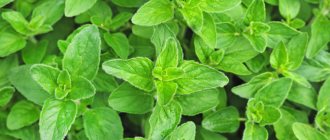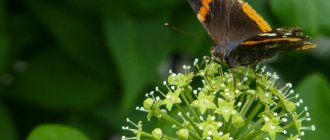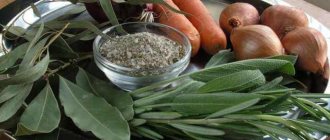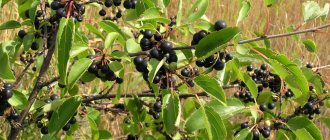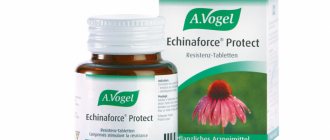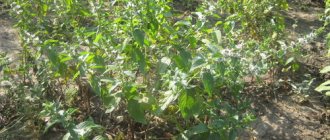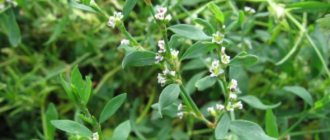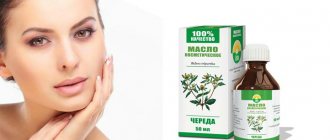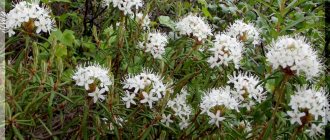Common bearberry (bearberry, bearberry, bear's ear, bearberry, tormento) is a creeping evergreen shrub from the Ericaceae family, very similar to lingonberries. It grows in Siberia, the Caucasus, the Far East, and is also found in places in the sandy tundra. Distributed in North America, Northern Europe. It is also found in Central and Southern Europe: in the Alps, Apennines and Balkans.
Prefers dry pine forests, deciduous forests, birch-larch woodlands, glades, grows well on predominantly sandy soil, with sufficient access to sunlight. It colonizes clearings and burnt areas well, growing on seaside rocks and gravelly places. With insufficient moisture, its growth slows down, the leaves become rough and brown, and then the leaf shoots die off altogether. The peculiarity of the plant is the presence of endo- and exotrophic mycorrhiza, therefore for growth there must be mycorrhiza-forming fungi in the soil. It does not tolerate competition with other plants and grows in clumps within its range.
The medicinal properties and contraindications of bearberry have been known for a very long time, which allows the plant to be used in official and folk medicine.
Morphological description
The height of the bush is 5-30 cm. The stems are branched, recumbent, rooting and ascending. The leaves have an oblong, obovate shape. At the base they are narrowed into a short petiole, and at the top they are rounded. Dark green above, shiny, with visible veins, matte and lighter below. The leaves have a solid edge, without edges, and are arranged alternately: they live for 2 years, and in the 3rd they die and fall off.
A distinctive feature of lingonberries is small brown dots on the back of the leaves. Knowing this feature, plants can be easily identified in nature.
Blooms from April to June. The inflorescence is a small apical raceme, consisting of several drooping white-pink flowers on short pedicels. The corolla itself is pitcher-shaped, has a five-toothed bend, and there are hard hairs inside. The anthers with appendages are dark red in color and open with holes at the top. The style is somewhat shorter than the corolla.
The fruit ripens in August-September and is a berry-shaped drupe of dark red color with a diameter of 0.6-0.8 cm. The pulp is mealy, inside of which there are five seeds.
Botanical description
The grass belongs to the Heather family. This is a perennial with a not particularly tall, thin stem, white and pink flowers, and looks like lingonberries. Due to the similarity of the leaves, the plants are often confused. But lingonberry leaves have characteristic spots, and bearberry berries have a tart taste.
The perennial chooses to grow in places with a cold climate. It grows in Siberia and the Far East. All parts of the perennial have medicinal properties. Bearberry is used both fresh and dried. It is interesting that, despite the centuries-old use of the plant, it is still being studied.
Chemical composition
The main chemically active substances of the plant are phenols and phenol glycosides (their derivatives):
- arbutin (up to 20% in shoots) – its content is higher in autumn;
- methylarbutin;
- n-methoxyphenol;
- hydroquinone;
- 2-O-galloylarbutine;
- piceoside;
- 6-O-galloylarbutin.
Bearberry leaves are also rich in:
- terpenoids (ursulic and oleic acids, uvaol, erythrodiol, lupeol, α- and β-amyrins);
- anthocyanins (cyanidin, delphinidin);
- catechins;
- resin;
- wax;
- iodine, zinc, copper and manganese;
- ascorbic acid.
The following were found in the shoots of the plant:
- flavonoids (isoquercetin, quercetin, myricitrin, myricetin, hyperoside);
- C-benzylated dihydroflavanones (hamanetin and isochamanetin);
- iridoids (monotropein and unedoside);
- phenolcarboxylic acids with derivatives (up to 6% gallic acid, n-coumaric acid, caffeic acid, lilac acid, ellagalic acid, protocatechoic acid, vanillic acid, methyl gallate, corilagin);
- up to 35% pyrogallic tannins (ellagitannins and gallotannins);
- organic acids (formic, quinic, galsic, malic, etc.);
- small amount of essential oil;
- micro- and macroelements.
Bearberry species
The genus of bearberries are small bushes adapted to arctic and subarctic climates. They grow in North America, Northern Europe, Siberia, and in the mountains of Central America.
The genus includes more than 75 species, including:
- Caucasian bearberry (Arctostaphylos caucasica Lipsch);
- Nevada bearberry (Arctostaphylos nevadensis Gray);
- bearberry (Arctostaphylos pungens Kunth);
- creeping bearberry (Arctostaphylos repens (Howell) V.Wells);
- tomentose bearberry (Arctostaphylos tomentosa (Pursh)), etc.
The use of bearberry is recognized in medicine.
Bearberry in Latin : Arctostaphylos uva-ursi (L.) Adans.
Other names: bear's ears, bear's ear, bear's berry, bear's grape, common tormentilla, tormentorum, bearberry, bearberry, bearberry, bearberry, bearberry, wolfberry, lingonberry, zvichaina tormentorum (Ukrainian), etc.
History and scientific research of bearberry
- The first mentions of the medicinal properties of bear's ear date back to the 12th century - then it was already used in England: in the Old English medicinal book “Meddygon Myddfai” a description of the properties of the plant is given.
- In medieval medicine of the Armenian peoples, torment was used as an astringent for diarrhea and hemoptysis.
- Bearberry received recognition in Germany as a medicinal plant only in the 18th century.
The German public health service recognizes bear's ear as one of the effective remedies for the treatment of inflammatory processes of the urinary tract.
- Instructions for the use of bearberry in scientific and practical medicine in France date back to the 20s. 20th century The famous herbalist in this country, Leclerc, recommended the plant as a diuretic and anti-inflammatory drug for pathologies of the kidneys, bladder and prostatitis.
- In folk medicine of Siberia and the North of Russia, bearberry was used for pathologies of the urinary system, for the treatment of sexually transmitted diseases - syphilis and gonorrhea. Moreover, in a number of localities in Russia the plant is still used for this purpose.
- In Lithuanian folk medicine, the plant was used in the treatment of chronic diarrhea, hypertension, neuroses, to tone the body, and eliminate inflammatory processes.
- Tibetan healers use the leaves of the plant for heartburn, Graves' disease, and gastritis.
- Ukrainian herbalist Nosal V. recommends plant preparations for urinary incontinence at night in children.
- Czech scientists have developed a technology for culturing mesophilic cells of bearberry leaves. However, arbutin and other phenol glycosides do not accumulate with this method, and the active base is represented by triterpene compounds derived from oleanolic acid.
- In 1974, at the Chemical-Pharmaceutical Institute of St. Petersburg, a method was developed for obtaining a liquid concentrate from a plant leaf that contained up to 15% arbutin. In experiments conducted on laboratory rats, it was found that the drug increased diuresis by 37%.
- In vitro experiments have proven that plant leaf extracts inhibit the growth of Staphylococcus aureus, Enterobacter aerogenes, Enterococcus faecalis, Bacillus subtilis, Salmonella typhimurium, Escherichia coli, Proteus vulgaris, Proteus mirabilis, Ureaplasma urealyticum, Serratia marcescens, Pseudomonas aeruginosa, Streptococcus mutans and Mycoplasma hominis .
- In 2001, Japanese scientists found that bearberry extract increases the sensitivity of St. aureus (methicillin-resistant strains) to β-lactam antibiotics.
Bearberry: benefits of the plant
Since ancient times, our ancestors have used the healing powers of nature. For them, every leaf was a cure for some ailment. Bearberry was no exception to the rule; moreover, its beneficial properties continue to be used even in the 21st century. However, like other plants, bearberry also has a number of harmful effects on the body, so I recommend using it with caution, after consulting with your doctor.
Just before describing the beneficial properties of the plant, I’ll tell you about its appearance. The common bearberry is represented by a small perennial shrub that spreads along the ground and can occupy huge areas, the article says. The plant belongs to the Heather family with a stem height of 30–130 cm and small oblong leaves with a shiny surface.
From April to June, tiny pinkish flowers bloom on the bush. In autumn, red berries are formed, which have a tart, sour taste. The flowers and berries of the plant are practically not used to treat diseases.
It is quite difficult to correctly collect and prepare fruits so that all the healing substances are ultimately preserved. Because of this, the leaves and shoots of the plant are used in folk medicine. People call bearberry differently: “mourberry”, “bear ears”, “bearberry”, “bearberry”, “bear grapes”.
Due to the specifics of its growth, the shrub absorbs unique substances. They are the main value for the treatment of ailments.
Let's take a closer look at why bearberry is so valuable - the properties of the plant and its uses. It contains many important substances for the body:
- arbutin cleanses the body, is a diuretic and an antiseptic;
- organic acids eliminate inflammation, fight bacteria, inhibit the development of cancer and have a rejuvenating effect;
- flavonoids are a shield for the body, preventing the entry of microbes and viruses;
- tanning components have a binding effect on the intestines, which prevents the risk of development and further treatment of diarrhea;
- hydroquinone nourishes blood cells with oxygen, has a beneficial effect on metabolism, and whitens the skin.
Additionally, bearberry leaves are saturated with vitamin C, essential oils and other beneficial components. You can learn more about the chemical composition of the described plant by reading the scientific article of my colleagues. The listed components actively work not only separately, but also in combination, which helps the human body quickly overcome the disease.
The beneficial properties of the so-called bear ears help in eliminating the following ailments:
- hangover;
- problems with acid-base balance;
- gastrointestinal disorders, including gastritis;
- kidney stones and sand;
- inflammation;
- swelling;
- diabetes mellitus;
- chronic cystitis and nephritis;
- gout;
- Graves' disease;
- pain due to rheumatism and cancer.
Bearberry leaves normalize metabolic reactions in the body. The plant is not considered a vitamin supplement, but sometimes provides benefits for maintaining the stable functioning of internal systems. How then is bearberry used? Herbal tea with many useful components is a great option. It will help remove swelling and cleanse the body.
Another important quality of bearberry is its powerful effect on ultraviolet rays. Usually our skin produces the necessary substances to reflect harmful radiation, but in an urban environment, light streams exert double pressure. Using the plant will help combat the negative effects of UV rays.
Pharmacological and medicinal properties
Plant preparations have pronounced antimicrobial, anti-inflammatory and diuretic properties. The beneficial properties of bearberry are due to the action of the chemicals that make up its parts.
- The anti-inflammatory effect is due to the presence of tannins in the plant.
- Antioxidant properties are determined by the presence of gallic acid.
- Antiseptic properties are associated with the local irritant and antimicrobial effect of phenol hydroquinone.
- The diuretic effect is also associated with hydroquinone and other phenols: they irritate the kidney tissue as they pass through it and increase urination.
- Antimicrobial properties are associated with the glycoside arbutin, which breaks down into free hydroquinone and glucose under the influence of the enzyme arbutase.
- The antibacterial and anti-inflammatory effect is determined by ursulic acid.
- Hydroquinone has a rejuvenating, whitening and cleansing effect.
In both official and folk medicine, bearberry is primarily used as an antiseptic for diseases of the urinary tract, urethra and bladder, and urolithiasis. The combined effect of bearberry leads to cleansing of the urinary tract from pathogenic flora and inflammatory products.
Also, plant preparations are used as an astringent for heartburn, diarrhea, gastritis, colitis and other gastrointestinal diseases, for diabetes, gout, tuberculosis, atherosclerosis, and rheumatism. Milk decoctions of bearberry fruits are used to treat diarrhea and gastritis.
External use of plant preparations helps reduce the severity of wrinkles, improve and brighten the skin (with hyperpigmentation), eliminate inflammation and blackheads. Thus, cream with bearberry Kredo Natur is a unique product that cleanses pores of blackheads in 7-10 days. The domestic cream with bearberry is recommended for people with very dry and sensitive skin, and according to reviews, it really helps with these problems.
Contraindications and side effects
As with other natural and synthetic medicinal products, the use of high doses of bearberry is fraught with negative reactions from the body. The kidneys, gastrointestinal tract, and uterus may be damaged by overdoses. Bearberry irritates the muscles of the uterine tissue, so during pregnancy, recipes based on the plant are prohibited.
Bearberry should not be used for:
- breastfeeding – is fraught with the development of milk deficiency;
- acute kidney diseases - what is good for chronic or mild inflammation is dangerous during exacerbations of pyelonephritis, for example, symptoms may become more pronounced, and the course of the disease will be complicated;
- acute gastrointestinal disorders - this mainly concerns the use of bearberry leaves;
- constipation - likely aggravation of their manifestations;
- individual intolerance.
It is very important whether you treat bearberry-based recipes correctly. Side effects have been recorded if the patient uses hot extracted herbs. If for some reason you intend to use bearberry for a long time, other medicinal agents with strong diuretic and anti-inflammatory effects are added to it.
Instructions for the use of bearberry in folk medicine
Bearberry decoction
Indicated for chronic gastritis, edema, cystitis, urethritis, chronic nephritis, constipation, uterine bleeding, chronic colitis, diathesis, diabetes. It is used externally to treat poorly healing wounds, abrasions, and scratches.
Preparation: 1 tbsp. Grind the dry leaves until a powdery mass is formed, pour in 1 cup of boiling water and place the whole thing in a water bath. Heat this mixture for 20 minutes, then leave for another 40 minutes. Strain the resulting product and bring to the original volume with boiled water. Not recommended for patients with sensitive stomachs as it contains tannins and irritates the mucous membrane.
Take after 30 minutes. after meals, 50 ml, 3 times a day.
Cold infusion
Effective for cystitis and other inflammatory processes in the urinary system.
Preparation: 10 gr. Combine dry leaves of the plant with 2 glasses of cold water.
Leave for 12 hours, then heat for 5 minutes, without bringing to a boil, strain. This method allows you to extract almost all active components from the leaves, but without tannins. This reduces the likelihood of side effects and allows you to get a mild, but no less effective remedy.
How to drink bearberry: 30 ml 30 minutes after meals, 3 times a day. You can store the infusion in the refrigerator for 48 hours.
Alcohol tincture
Used for sleep disorders, diseases of the nervous system, urolithiasis, alcoholism; rheumatism, cancer and gout, as a pain reliever.
Preparation: 40 gr. Place crushed dry leaves in a glass container, add 250 ml of vodka and leave to infuse in the dark for 2 weeks. Strain the finished tincture.
Take 15 drops 30 minutes after meals 3 times a day.
Extract
It is used in the complex treatment of pathologies of the urinary tract: pyelonephritis, cystitis, urethritis, prostatitis. In gynecology it is used for cervicitis and vaginitis. In cosmetology it is used to improve the appearance and cleanse the skin, accelerate regeneration and rejuvenation, reduce inflammation and heal damage. Stops hair loss and stimulates the growth of hair follicles.
Preparation: the leaves of the plant are crushed to 3 mm and an extractant (water or alcohol) is prepared. For 1 part of leaves, take 5 parts of extractant, which should be divided into 3 portions: 3:1:1. First, 3 parts of the extractant are added to the leaves and kept for 4 days at room temperature. The extract is drained, the grass is squeezed out and poured with 1 part of the extractant. After 2 days, the process is repeated, but the drug is infused for 1 day. All extracts obtained are mixed together and stored in a bottle in the refrigerator.
Take 1 tbsp 30 minutes before meals. up to 5 times a day for 1 month. 4 courses of treatment can be carried out per year. Use externally for local treatment of problem areas.
Bearberry in cosmetology
In cosmetology, the leaves of the bear's ear herb are actively used to maintain beauty, youth of skin and hair. The plant removes pigmentation, brightens the skin and fights its problems, strengthens the hair.
- To remove pigmentation, use a decoction: 3 tbsp. spoons of grass leaves are poured with half a liter of water, heated in a water bath, and filtered. The cooled broth is used to wipe the areas with pigmentation several times a day.
- A decoction of the leaves of the plant can be used to wipe inflamed areas of the skin.
- For the face, the antioxidant quality of bearberry is used, which helps protect the skin from dryness, fight fine wrinkles, revitalize and rejuvenate it.
- To strengthen hair, use a decoction of the leaves of the bear's ear herb, which is used to rinse your hair after washing.
- Using a concentrated infusion of plant leaves, hair is lightened.
The cosmetic industry produces cosmetics based on bear's ear. For example, Clean Line has a cream that caters to dry, sensitive skin. "Credo Natural" produces a cream for cleansing pores.
Collections with bearberry and recipes for certain diseases
Collection for the treatment of neuroses, insomnia
Mix bear's ear and motherwort grass in equal parts. Take 2 tbsp. mixture, add 3 cups of water to them and place everything in a saucepan and in a water bath. Cook until the liquid has evaporated by 1/3. Cool and strain.
Take 50 ml before meals (before each meal).
Collection for the treatment of cystitis
Mix 20 gr. hernia and bearberry, add 5 grams to the mixture. dried parsley and the same amount of celandine. Grind the plant mixture and add 1 cup of boiling water to it, leave for 60 minutes.
Take 3 times a day, 30 minutes after meals, 50 ml.
Diuretic collection
Take bearberry leaves, licorice root and cornflower flowers in a ratio of 3:1:1. Add 1 tbsp to 250 ml of boiling water. this mixture and leave for 20 minutes.
Take 1 tbsp. three times a day.
Recipe for gout
Pour 500 ml of water into a saucepan, put 3 tbsp. dry bearberry leaves, put on fire and wait until it boils. Simmer for 15 minutes, remove from heat and cover with a lid, wait until it cools down. Strain.
Take with meals, 2 times a day. You can also moisten a gauze bandage in this decoction and apply it to sore spots for 15 minutes. This treatment is carried out until the pain completely disappears.
Collection for pyelonephritis
Take 10 grams of bearberry leaves, birch leaves, horsetail grass, licorice root and 20 grams of lingonberry leaves, flax seeds and nettle herbs. 1 tbsp. Pour 200 ml of boiling water over this mixture, heat in a water bath for 15 minutes and leave for 60 minutes.
Take 1/3 cup twice a day.
Collection for edema
Mix birch leaves, corn silk and bearberry in equal parts, 100 g. steam the collection with 200 ml of boiling water, leave for 24 hours in a dry, warm place.
Take half a glass 3 times a day, 60 minutes after meals.
Medicine for the treatment of tuberculosis
2 tbsp. Mix dry raw materials of the plant with 100 ml of vodka, leave in the dark for 14 days, strain.
Take 10-15 drops after meals, 3 times a day.
Collection for the treatment of rheumatism
In equal proportions, take bearberry leaves, horsetail grass, flaps of bean pods, corn stigmas, sweet grass and knotweed grass, willow bark, cornflower flowers, silver birch buds. Grind the plant mixture, take 1 tbsp. this mixture and pour 250 ml of boiling water, boil for 10 minutes and leave for another half hour, strain.
Drink 100 ml h/w 40 minutes after meals 5 times a day.
Collection for the treatment of atherosclerosis
Take equal proportions of bear's ear, heart-shaped linden flowers, oregano, peppermint leaves, large plantain, motherwort, horsetail, marsh cudweed and rose hips, and chop. 1 tbsp. Pour boiling water (2 cups) over the mixture and leave for 40 minutes, squeeze.
Take 1 glass twice a day. 60 minutes after eating.
Collection and preparation
Bearberry leaves (bear ears) are most often harvested for medicinal purposes. The collection is carried out twice a year: in early spring after the snow cover melts and before the plant blooms and after the fruits ripen before snow falls. Bearberry twigs with leaves (grass) about 3 cm long are cut with pruning shears. It is strictly forbidden to pluck the plant by its roots, as this leads to the destruction of the thickets. Repeated collection from one plant can be carried out after 3 years.
The twigs are dried in the shade, spread out in a thin layer, preferably on wire racks, with good air ventilation, remembering to turn them over frequently. In the dried raw materials, the leaves are separated from the twigs. Store in cardboard boxes or bags made of natural material in a dry place with good air ventilation. Shelf life – 5 years.
Pharmaceutical preparations with bearberry
- Uriflorin . A single drug in the form of tablets based on the leaves of the plant, which is effective in the complex treatment of inflammatory diseases of the urinary tract and bladder (cystitis, urethritis).
- Lessons . Syrup, which, in addition to bear's ear, contains extracts of birch leaves, lingonberries and cranberry fruits. Indicated in the complex treatment of inflammation of the bladder and urinary tract.
- Uriflan . Dietary supplement in the form of capsules containing dry extract of the plant. Indicated in the treatment of chronic and acute pyelonephritis, acute and chronic cystitis and urethritis, congestive processes in the pelvis.
- Ursul . Multicomponent dietary supplement for food. It is recommended as a general strengthening drug to maintain the functions of the urinary system, and also as an additional source of minerals for inflammatory pathologies of the genitourinary tract.
- Dry bearberry leaves (or in filter bags) are a herbal medicine used in the complex treatment of urinary tract inflammation.
Reviews
Bearberry – real patient reviews:
Irina: When I had cystitis as a child, my mother went to a neighbor, who gave me dry grass in a canvas bag. She called her bear ears. We brewed it, I drank it, and everything really went away. I myself don’t understand how a folk remedy could help with a bacterial infection. But nonetheless! I keep bearberry tea at home and brew it at the first suspicion of cystitis, whether it is true or not, it helps, that’s a fact.
Larisa: From an early age, our family has honored herbal medicine. When I was young, I forgot about it, but after 35, family traditions somehow came to mind again. Among the products that must be prepared is bear berry. A life-saving recipe for urethritis, and this plant is useful for the intestines. I didn’t notice any side effects.
Contraindications to treatment
Bearberry should not be taken if:
- acute renal failure;
- glomerulonephritis;
- children under 12 years old;
- lactating and pregnant women;
- patients with hypersensitivity to the plant.
Bearberry is contraindicated during pregnancy, since the plant has a tonic effect on the muscles of the uterus, which can lead to miscarriage or premature birth. Despite this, some doctors prescribe plant preparations to pregnant women when inflammatory diseases of the urinary tract and edema are detected, considering them safer than chemically synthesized drugs. However, there are limitations for this group of patients, and they should not be neglected.
Composition and properties of bearberry
Gardeners and landscape designers are interested in the decorative properties of bearberry. An unpretentious, low plant is well suited for embankments, grottoes, slopes in parks and groves.
Bearberry is planted in rock gardens and in the collections of botanical gardens. Bearberry leaves are used as medicinal raw material; they can be bought in pharmacies. Tea and decoction treat diarrhea, kidney disease, and bladder disease.
The medicinal properties of bearberry berries are less known, although their composition is not inferior to the foliage. The red balls contain a lot of acids, vitamins, and minerals.
They affect the body in much the same way as lingonberries; they can be used to treat vitamin deficiencies and scurvy. Remedies made from berries lower fever, soothe, and heal wounds.
Doctors use bearberry berries to treat:
- ulcers, tumors in the gastrointestinal tract;
- cholecystitis, gastritis;
- jaundice, hepatitis;
- visual system;
- helminthiases.
Bearberry leaves contain:
- flavonoids (destroy harmful bacteria and viruses);
- gallic acid (an antioxidant that prevents the development of tumors and slows down the aging of the body);
- ursulic acid (relieves inflammation, neutralizes the effects of harmful bacteria);
- hydroquinone (supports the body when there is a lack of oxygen, rejuvenates the skin);
- arbutin (inhibits the absorption of water by the kidneys);
- tannins (strengthens the intestines).
- The properties of bearberry determine the diseases for which remedies from the leaves are used:
- cystitis (leaf tea disinfects, relieves inflammation, promotes urine removal from the body);
- urethritis (microorganisms that cause the disease are destroyed, the work of the urinary system is stimulated);
- prostatitis (complex preparations with bearberry relieve inflammation and restore urination);
- kidney disease (relieves inflammation, promotes the removal of pathogens from the body);
- diseases of the gastrointestinal system (stabilizes intestinal function, restores the stomach with ulcers);
- leucorrhoea, venereal diseases;
- non-healing wounds, ulcers, eczema;
- diathesis;
- swelling;
- insomnia, depression, alcoholism;
- tumors.
Bearberry can be used to treat children. When used separately, flowers treat heart disease, blepharitis, conjunctivitis, and strengthen the immune system.
The leaves are harvested before flowering or after the berries ripen. The tops of the shoots are cut off, impurities are removed, and brown leaves are torn off.
Dry outdoors or in an electric dryer (temperature 50-80°C). Raw materials can be stored in wooden or paper containers for up to 5 years. Even if you leave some of the shoots intact, the plants recover slowly; repeated harvesting in one place is possible after 5 years.
Also check out the article on meadowsweet.
Side effects and special instructions
When treated with plant preparations in large doses, there may be an exacerbation of inflammatory phenomena in the urinary organs and the development of renal symptoms, which is associated with prolonged irritation of the renal tubules.
It is also possible to develop vomiting, nausea, chills, fever and diarrhea.
- To reduce the likelihood of side effects when treating bearberry, it is recommended to use it in combination with plants (in the form of collections) that have anti-inflammatory and diuretic properties.
- Also, during the period of treatment of urinary tract pathologies with plant preparations, protein products should be excluded, since they oxidize the urine. The bulk of the diet should be plant foods. To ensure that the urine pH remains alkaline, before taking bearberry preparations, you need to drink a solution prepared from 1 glass of water and 1 tsp. soda
- During treatment, you should not take medications that contain alkalis and alkaloids.
Description of bearberry
In addition to the common bearberry, 3 species were brought to Russia (felt, Nevada, spiny), whose natural habitat is the North of America. In the northern regions they freeze over.
The common bearberry is perennial, evergreen, and grows in pine forests. One and a half meter creeping branches form crowns close to the ground.
Young shoots with fine fluff, brown-green, old shoots brownish-red, recumbent. Leaves on cuttings, green, shiny on top.
The inflorescences of the raceme are located at the tops of the branches. Pink pitcher flowers consist of 5 petals and 5 stamens.
The nectar is located at the base of the “pitcher”; pollination requires large insects that can overcome the prickly, hard hairs.
After fertilization, an ovary of round, red, five-seeded berries is formed (see photo of bearberry). By the end of summer, up to 250 kg of fruits ripen per hectare.
How to distinguish bearberry from lingonberry
Very often, dried lingonberry raw materials are given out under the guise of bearberry and sold in markets. There will be no harm from such treatment, but there will also be no benefit to the expected extent.
Even in the 8th century pharmacopoeia, a technique for analyzing medicinal raw materials to determine falsification was described. An aqueous infusion is prepared from the tested raw material in a ratio of 1:50, then a crystal of iron sulfate is added to it. If the tested raw material is bearberry, then the solution should first turn red, then turn purple, and after the end of the reaction a dark purple precipitate should appear. If it is a lingonberry leaf, such a reaction is not observed.
The second method requires the presence of ferroammonium alum, when a few drops are added to the bearberry infusion, the latter acquires a black-blue color. If the infusion is made from lingonberries, it will turn green-black.
Author:
Sabuk Tatyana Leonidovna hygienist, epidemiologist
What it looks like and where it grows
Bearberry is a perennial evergreen plant that belongs to the Heather family.
- The shrub is low-growing: from 5 to 30 centimeters in height.
- Thin fluffy stems of brownish-green or brownish-red color branch, lie on the ground, take root on their own and form new growth - a creeping carpet. The length of the stems reaches one and a half meters.
- The oblong leaves of the grass are obovate in shape, tapering towards the base, and rounded at the top. They are attached to the stem using a short cutting. The leaves are dark green, with a pronounced shine on top, matte and lighter below. Visible veins appear on them. Arranged alternately. After two years they die, fall off, and new ones grow in their place.
- The plant blooms in April, the flowering period ends in June. It is interesting to watch the bearberry bloom. Small white and pink flowers are collected in tassel inflorescences that droop to the ground. The corolla of the flower is in the form of a jug with stiff hairs inside and has five folded denticles. The “pitchers” are pollinated by large insects, generously sharing nectar and pollen with them.
- The drupe berries of the grass ripen in late summer - early autumn. The dark red fruits, 0.5 cm to 1 cm in diameter, contain a mealy, dry pulp reminiscent of oatmeal - hence the name - with five seeds.
Northern Europe, North America are the places of distribution of the plant. Bear berries are found in the center and south of Europe: in the Alpine mountains, on the Balkan Peninsula, and the Apennine Peninsula. In Russia, bearberry has chosen the Center, the Urals, Siberia, the Caucasus, and the Far East. Bear's ear grass grows in sandy areas of the tundra. The plant prefers sandy soils with good access to sunlight. In addition to sunlight, the bear's ear needs enough moisture. Insufficient moisture affects the growth of the plant - it slows down: the leaves of the grass become coarser and brown, the stems dry out.
For development and growth, bearberry needs the soil to be enriched with mycorrhizal fungi, because the plant contains endotrophic and exotrophic mycosis.
Bearberry is found in pine forests, deciduous forests, among sparse birch-larch crops, in clearings, burnt areas, and chooses seaside rocks and gravelly areas. The bear's ear does not like competitors, so it forms entire clumps and displaces other plants from its range. Gardeners and landscape designers appreciated the decorative properties of the unpretentious plant. Bear ears are used to decorate embankments, grottoes, and slopes in park areas. Rock gardens and botanical gardens cannot do without plants.
How to distinguish bearberry from lingonberry
Upon careful examination of the two plants, it becomes clear what the difference is between bearberry and lingonberry.
- Lingonberries choose moist, fertile soil, while bearberry can grow on dry, poor soil.
- The height of the bushes is different: lingonberry grows only up to 15 centimeters, bearberry - twice as tall.
- The root system of the bear's ear does not cooperate with fungi; in lingonberries, mycorrhiza of the fungus and the root is possible.
- The leaves of plants differ from each other. In bearberry they are stringy, reminiscent of bear ears - which is implied in one of the names. Lingonberry leaves are more elongated, the lower surface is strewn with dark speckles.
- Bearberry fruits are insipid and lack taste. Lingonberries have sweet and sour berries. Their shape is also different: spherical for the lingonberry, with a small hole in the center for the bear’s ear. The ripeness of lingonberry fruits is determined not only by their red color, but also by their softness. In bearberry, ripe berries remain firm.
There is a chemical way to test dried medicinal raw materials. A grain of iron sulfate is added to the water infusion. The red color of the mixture will indicate that the infusion is made from bearberry. Ferrous ammonium alum will make the bear's abalone infusion dark blue, and the lingonberry infusion - black and green.
Is it possible to eat bearberry berries?
Due to the unpleasant taste of the bear's ear berries, they are not eaten. This is good because they are dangerous for humans - you can be poisoned by them. Excessive consumption of leafy infusion of the herb also leads to unpleasant consequences: digestive disorders, poisoning.
Chemical and vitamin composition of bearberry
The main substances that bearberry contains are:
- Arbutin. This glycoside leads to the development of a diuretic and bactericidal effect.
- Flavonoids. These are chemical compounds that have antiviral and antimicrobial effects.
- Ursulic acid. Its content allows you to reduce the severity of the inflammatory reaction and destroy pathogenic flora.
- Gallic acid. It helps not only slow down aging, but also destroy cancer cells.
- Tanning components. They have an astringent and anti-inflammatory effect.
- Hydroquinone. A compound of organic origin has a rejuvenating effect and brightens the skin.
- Vitamin C. A powerful antioxidant has a protective effect on the body, improving the condition of the vascular wall and increasing immunity.
- Essential oils. A small content of these substances leads to an antibacterial effect.
- A complex of macro- and microelements that have a positive effect on the functioning of the heart, blood vessels, and digestive tract.
